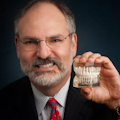Everything I do—practicing clinical dentistry, managing staff, and overseeing patient experience—is always perfect. It must be, because I get to write a monthly column for Dental Economics.
Being considered an expert comes with a real burden; you are expected to always know the answers and have the best advice. In reality, the only thing that I have is 42 years of clinical experience. This experience has taught me the importance of staying humble and understanding that nothing lasts forever. I’ve also learned that clinical mistakes happen and we must provide solutions.
More by this author:
- Can the introverted dentist be successful?
- What does patient comfort mean?
- How to give painless injections
Everyone makes mistakes
Apart from removing the wrong tooth, I can honestly say that there is not a clinical mistake that I haven’t made. When something doesn’t go smoothly, I tend to become discombobulated. I’m not referring to my mistakes in clinical dentistry here; I’m speaking about repairing relationships.
Let’s talk clinical and maybe it will shed some light on the best way to handle things. Pogo said, “We have met the enemy and he is us.”1 How we react to situations has a great impact on the outcome. We must remember that a person is connected to these teeth. We all take courses on restorative methods, dentures, all on four, and headache management, but few courses are offered about patient relationships and management. There are courses on patient conversations related to “selling cases” and how to get patients in the office, but what about when something goes wrong? When we have a dissatisfied patient, the correct question is, “What can we do to make you happy?”
Always try to make it right
Patient retention and patient satisfaction are the key to practice growth. I have seen so many practices that are 40 years old with one hygienist. What happened to all those patients? Where did they go? I’m not saying patients have not left my practice; they certainly have because it is impossible to make everyone happy all the time. Despite that fact, you should always try. Create a culture of kindness and understanding. We as dentists are so cavalier about one of the most intimate parts of the body. When we meet a denture patient for the first time, should we assume they’ve had positive dental experiences throughout their life? Someone took out their teeth; I’m willing to bet that of all the dentists reading this article, not 1% have lost all their teeth. How can we have empathy when none of us have had these dental experiences?
What do we do when our well-intentioned dental treatment doesn’t go well, or the patient experience at the first phone call is bad? We must run toward the patient and toward the problem. We must reach out, seek out, and try to determine the best solution. Even if the patient is in the wrong, we must not run away, but toward the patient.
It starts when someone comes into the office at the wrong appointment time. They have a card showing a different time than the front desk has in the appointment book. You have to try to make it right. It could mean a no-charge appointment or a gift card. That’s an easy one, but what about something that is really big and difficult to solve? It is totally up to you and your personality, but you need to run toward the patient. Tackle the problem head-on.
We need to understand that we deal with a lot of emotions when we deal with people’s teeth. Patients have high expectations, and we need to figure out how to meet them. There are patients you cannot satisfy, but you need to try. This requires sacrifice on your part, but when you retain the patient, you have the chance to make things right, and it’s so much better for the practice. Run toward the patient when there is a problem, and many times it will turn out the best for everyone.
Editor's note: This article appeared in the May 2023 print edition of Dental Economics magazine. Dentists in North America are eligible for a complimentary print subscription. Sign up here.
Reference
- “We have met the enemy and he is us.” This Day in Quotes. April 22, 2022. https://www.thisdayinquotes.com/2011/04/we-have-met-enemy-and-he-is-us.html
About the Author
Jeffrey C. Hoos, DMD
Jeffrey C. Hoos, DMD, a 1978 graduate of the Tufts University School of Dental Medicine, started his private practice as a one-operatory walk-up and grew it to a four-doctor practice with 25 staff members. He lectures on innovative techniques that balance the art, science, and business of dentistry. He is one of the first general dentists to be Brånemark certified for implant placement, and his office has become a teaching center for restorative and implant dentistry. Contact him at [email protected].

